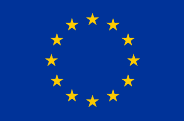
Safe non-food consumer Products in the EU and China
This factsheet has been produced to assist all those in the chain of distribution satisfy themselves that all the key elements of the EU’s product safety system have been put in place. This use of the checklist will help ensure that no important elements are overlooked.
All products on the EU market must be safe. This is a shared responsibility for all actors involved in the distribution chain, but the manufacturer is the one who will have the biggest influence on the safety of a product. If the manufacturer gets it right from the beginning, then the other actors merely have to ensure that their activities don’t compromise the product safety.
If the manufacturer is located outside the EU, then the importer, the trader or the online seller are best suited for checking that the manufacturer fulfils his obligations. (The importer and the online seller are even obliged to do this.)
This checklist can facilitate such checks. It describes what an importer, a trader or an online seller should check when they trade a product. The list applies a two-layer approach whereby the business can start with some initial checks (the “first level test”). If the product passes these checks, it would normally be a good indication that the product is OK and that further investigation most likely will not uncover errors. If the checks give rise to suspicion, then the checklist includes a number of “second level tests” allowing a more thorough examination of the documentation and the product.
Please note that these investigations cannot replace the conformity assessment of the product that the manufacturer must undertake. The investigations can merely give an indication that the manufacturer has fulfilled his obligations correctly.
EU Declaration of Conformity (DoC)
Technical documentation
Ask for copies of test reports and certificates:
Traceability
Marking
User’s guide
Examination of product
You may also visit the SPEAC ACADEMY to learn more about the EU Safety requirements.
The provided information was updated in 2022. Please note that some of the provided information could change during possible subsequent revisions of legislation, standards, and guidance documents. For any updates of official information on the EU product safety rules, please follow the Link to the webpage of the European Commission.
This document was produced with the financial support of the European Union. Its contents are the sole responsibility of SPEAC project and do not necessarily reflect the views of the European Union.

This website was created and maintained with the financial support of the European Union. Its contents are the sole responsibility of SPEAC project and do not necessarily reflect the views of the European Union.